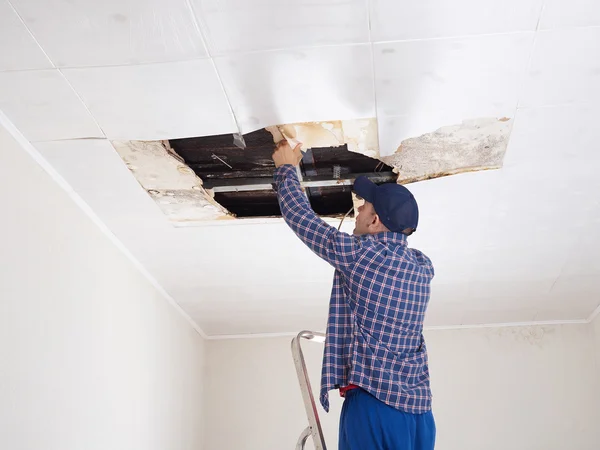How Moisture Results in Bathroom Water Harm
How Moisture Results in Bathroom Water Harm
Blog Article
The content following next in relation to How to Repair and Prevent Bathroom Water Damage? is quite engaging. You should check this stuff out.

Water damage usually takes place in the shower room due to the water utilized everyday. Often, the damage could be a little mold from the shower. Various other times, it's substantial damages on your floor. Whatever it is, it is always good to recognize the reason and also avoid it before it happens.
This overview will certainly go through some of the usual root causes of water damage in the washroom. We will certainly also analyze what you can do to stop these causes from damaging your washroom. Let's dive in.
These are the common factors you would have water damage in your shower rooms and also exactly how you can find them:
Excess Moisture
It's awesome to have that lengthy shower and also dash water while you hem and haw and also act like you're performing, but sometimes these acts can trigger water damage to your bathroom.
Spraying water around can cause water to head to corners and also form mold and mildews. View just how you spread excess moisture around, as well as when you do it, clean it up to prevent damages.
Fractures in your wall surface ceramic tiles
Bathroom wall surface tiles have actually been specially created for that purpose. They shield the wall from moisture from people taking showers. Nevertheless, they are not indestructible.
Often, your bathroom wall surface ceramic tiles crack as well as enable some moisture to leak right into the wall. This can potentially ruin the wall if you don't take any kind of action. If you observe a crack on your wall surface tiles, repair it promptly. Don't wait up until it destroys your wall surface.
Overruning bathrooms and sinks
As human beings, occasionally we make mistakes that can trigger some water damage in the shower room. For instance, leaving your sink tap on can cause overflowing as well as damages to other parts of the bathroom with dampness.
Also, a damaged commode might create overflowing. As an example, a damaged toilet handle or various other parts of the tank. When this occurs, it might harm the floor.
As quickly as you observe an overflowing sink or commode, call a plumbing professional to assist handle it immediately.
Ruptured or Leaking Pipes
There are many pipelines bring water to various parts of your washroom. Some pipelines take water to the commode, the sink, the taps, the shower, as well as many various other places. They crisscross the small area of the restroom.
From time to time, these pipes might obtain corroded and also burst. Various other times, human activity might trigger them to leak. When this happens, you'll discover water in the corners of your restroom or on the wall.
To spot this, watch out for gurgling walls, molds, or mildew. Call a professional emergency situation plumbing to fix this when it takes place.
Roof covering Leaks
Sometimes, the problem of water damage to the restroom may not come from the restroom. For example, a roof leakage can create damage to the shower room ceiling. You can identify the damage done by looking at the water stains on the ceiling.
If you locate water spots on your ceiling, inspect the roof to see if it's damaged. Then, call a professional to aid fix the problem.
Conclusion
Water damage to your washroom can be bothersome. However, you can handle it if you protect against several of the causes discussed in this guide. Call a professional emergency situation plumbing technician if you notice any kind of serious damage.
How to Repair a Water-Damaged Wall in the Bathroom
All you need to know to repair bathroom wall water damage – from identifying the water source to finishing the repair professionally. If you don’t act quickly to resolve a water damage problem, you could find that it develops into a mold issue and/or cause structural damage to your home. Follow this guide to repair your bathroom before it's too late.
All you need to know to repair bathroom wall water damage
Water damage is a common household problem, and one that, if left unrepaired, can quickly lead to structural problems and health issues. The two most likely rooms where water damage may occur is the bathroom and the kitchen – where water is used often and there is high humidity.
What is water damage?
It is easy to think of water damage as caused by a flood or leaking tap or burst water pipe. However, when water damage is assessed, there are three main categories into which water falls (as classified by the American National Standards Institute). These categories are defined as:
Category 1 Water – ‘Clear Water’
This is sanitary water. There is usually no major threat to health by washing with this water, drinking it, or inhaling if it is streaming. Most water that enters your home will be category 1 water, while most water leaving your home will be either category 2 or 3 water. It may also come from melting snow, rainwater and water tanks.
Damage caused by this type of water can usually be repaired or restored, though this doesn’t mean that there are no potential health issues.
Category 2 Water – ‘Grey Water’
This is contaminated water – sometimes considerably so – and will cause illness if consumed or if it comes into contact with your skin. Water damage in this category is often caused by overflows from toilet bowls, and damage to washing machines and dishwashers. While damaged items might still be repaired or restored after damage by grey water, it is more difficult and more expensive to do so.
If the water damage in your home has been caused by grey water, it is advisable to have repairs made by professionals.
Over time, grey water will deteriorate and become black water.
Category 3 Water – ‘Black Water’
Category 3 water, also known as black water, is highly contaminated and a great risk to health. This may contain raw sewage, heavy metals, and other toxic substances. It will smell terrible.
If this is the water that has caused damage in your bathroom, do not touch it. Stop the water flowing if possible, seal the room and call the experts: it really isn’t worth the risk of ill health and disease that could be fatal. It is very unlikely that items can be repaired or restored if they have been damaged by black water.
https://www.porterscleaning.com/blog/how-to-repair-a-water-damaged-wall-in-the-bathroom/

Do you like reading up on How to Repair and Prevent Bathroom Water Damage?? Place a comment directly below. We will be interested to know your opinions about this entry. Hoping that you come back again in the near future. Are you aware of another individual who is occupied with How to Repair and Prevent Bathroom Water Damage?? Please feel free to share it. Many thanks for taking the time to read it.
Overflow? We're here! Report this page